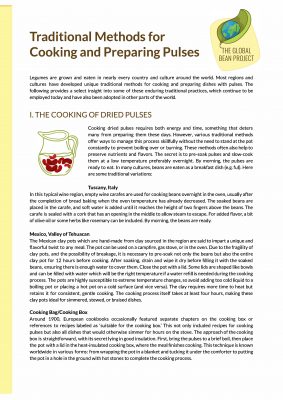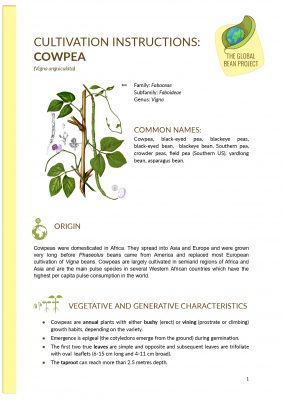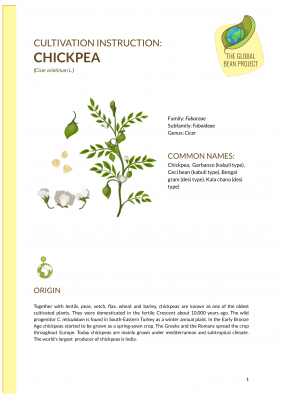(Cicer arietinum L.)
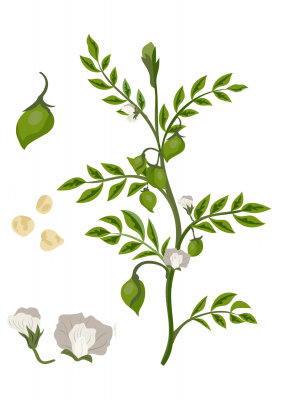
Family: Fabaceae
Subfamily: Faboideae
Genus: Cicer
Common names:
Chickpea, Garbanzo (kabuli type), Ceci bean (kabuli type), Bengal gram (desi type), Kala chana (desi type)

ORIGIN
Together with lentils, peas, vetch, flax, wheat and barley, chickpeas are known as one of the oldest cultivated plants. They were domesticated in the fertile Crescent about 10.000 years ago. The wild progenitor C. reticulatum is found in South-Eastern Turkey as a winter annual plant. In the Early Bronze Age chickpeas started to be grown as a spring-sown crop. The Greeks and the Romans spread the crop throughout Europe. Today chickpeas are mainly grown under Mediterranean and subtropical climate. The world’s largest producer of chickpeas is India.
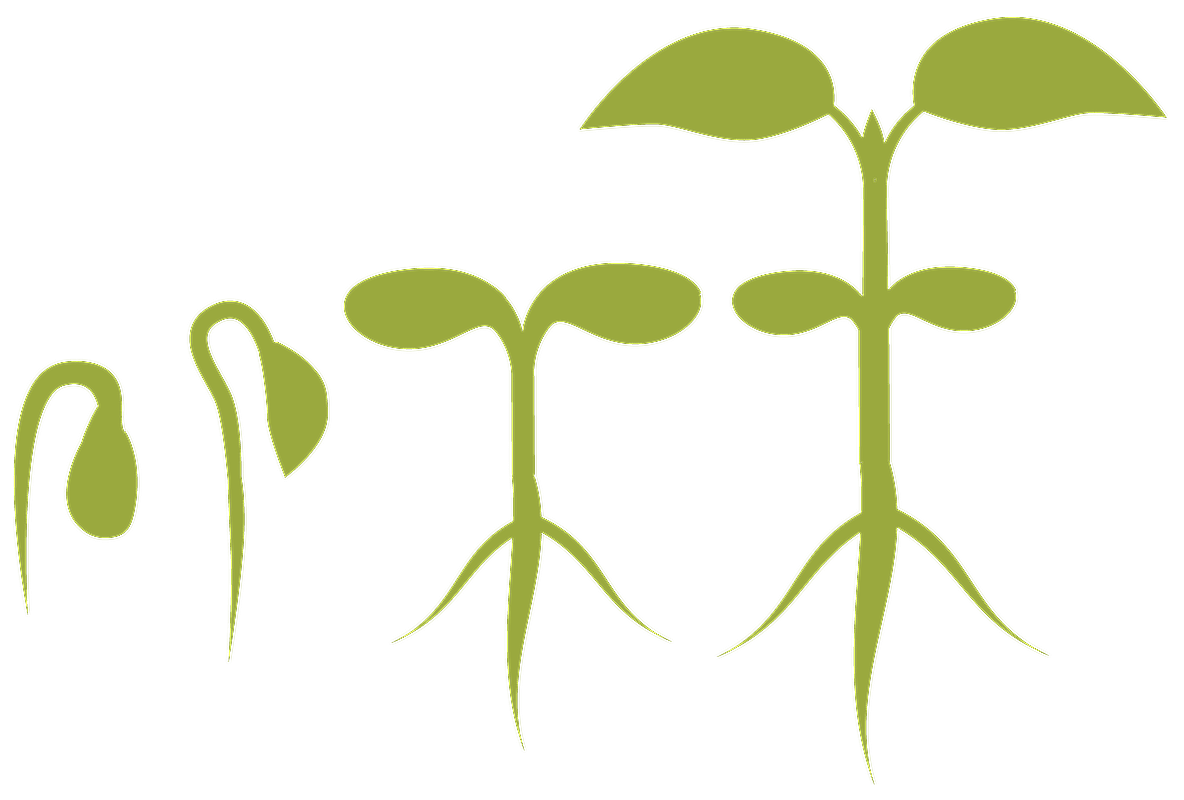
VEGETATIVE AND GENERATIVE CHARACTERISTICS
- There are two types of chickpeas:
- Desi-types: purple, violet flower, dark coloured seed coat, angular seed
- Kabuli-types: white flowers, cream coloured seed coat, larger round seed.
- Annual.
- Germination: optimum at 10 – 15°C, minimum 0°C. The soil temperature should be at least 7°C. The germination happens typically after about a week.
- Plant height: 40 cm to 100 cm.
- Leaf: leaves alternating on the branch; 5-8 pairs of leaflets form one leaf; leaflets fold when dry
- Flower: self-pollinating; first flowers appear approximately 40 days after planting.
- Stem: primary branch with lateral branches at multiple levels; more spreading habit when more space.
- Root: taproot more than 1 m deep; few lateral roots mainly close to the surface. When specific bacteria are added, nodules can form to fix atmospheric nitrogen.
- Pods: 1 – 2 cm long. The desi-types contain up to 3 seeds, the kabuli types typically one seed. The pods become dry and the seeds loosen from the pod wall when they are ready to be harvested. The mature pods rattle when shaken.
- Seeds: initially green, then with type-specific color when mature; desi-type with dark coloured seed coat and angular shape, kabuli-type cream coloured and round shape.
- Glands: they are hairy, excrete organic acids and can colour cloth or corrode leather shoes.
- Growth: indeterminate. The plants continue growing when conditions allow. They need stress (e.g. drought) to initiate maturation and will only mature in warm and dry climates.

SOIL AND CLIMATE
- Well-drained loamy soil (no heavy clays or acidic soils).
- High water requirement during germination, but sensitive to water logging.
- Warm climate – sensitive to temperatures below 15°C and above 35°C during flowering.
- Aerated sunny location.

CULTIVATION PRACTICES
- Sowing time: in the Mediterranean climate January to March; in Central Europe mid April to mid May.
- Soil temperature: 7°C optimal for germination.
- Distance between plants: about 8 – 10 cm.
- Distance between rows: about 30 – 50 cm.
- Sowing depth: 4 – 5 cm, deeper when surface moisture is lacking.
- Cultivation break: grow chickpeas only every 5 – 6 years in one location.
Tips:
- Chickpeas are very susceptible to waterlogging. Very wet locations or heavy soils should be avoided.
- Nitrogen fixation is only possible when bacteria specific to chickpeas are present. The bacteria can be added as inoculum during planting. Plants will also yiel without the bacteria.
- Unlike for other legumes, a support for climbing is not needed.
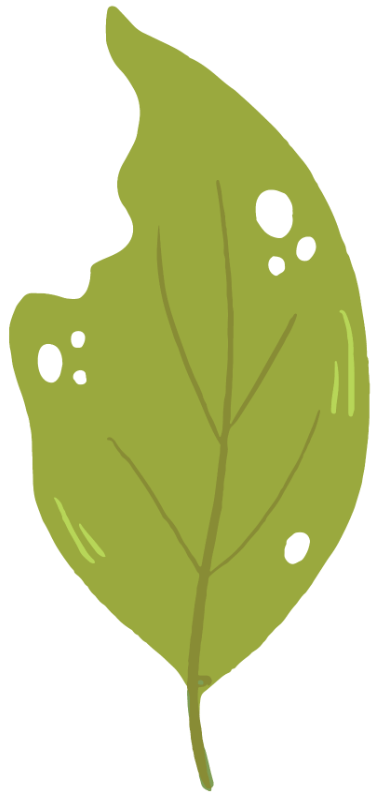
PESTS AND DISEASES
- Ascochyta blight: fungal disease causing brown round lesions, spreads fast under wet conditions, spores survive on plant residues for multiple years, infection can be seed-borne.
- Botrytis grey mould: develops during warm and humid conditions, seed-borne disease.
- Root rot: typically black root and yellow leaves, facilitated during wet conditions.
- Cotton/corn Bollworm (Helicoverpa armigera/Helicoverpa zea): larvae penetrate the pod and eat the seed, other hosts are corn and tomato.
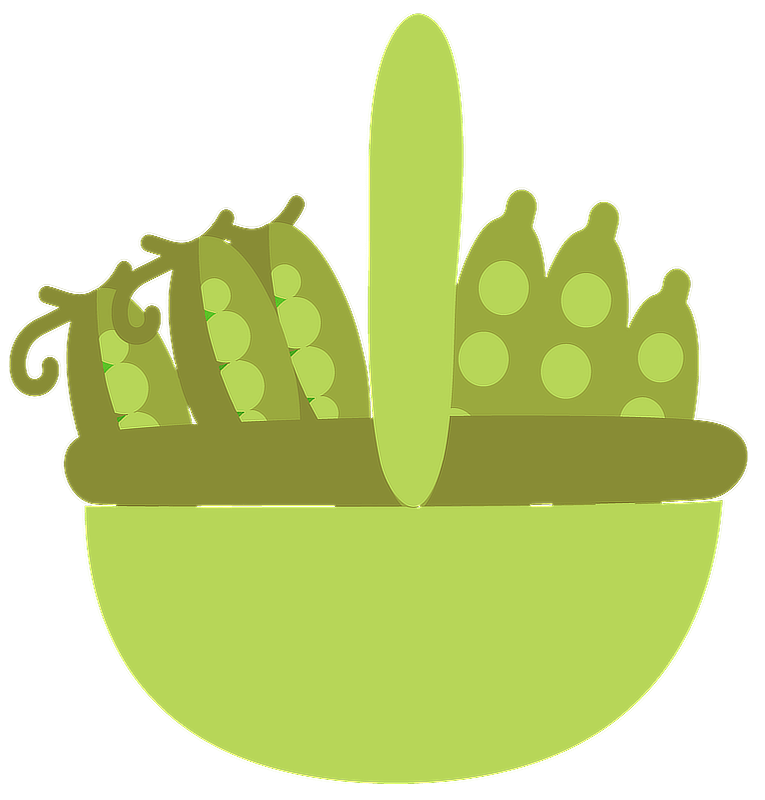
HARVEST AND USAGE
- Leaves: Green leaves can be used as a leaf vegetable, when washed and cooked.
- Immature seeds: Chickpeas can be harvested when they reach full size but are still green; typically consumed roasted or as vegetable; green seeds can even be digested raw.
- Mature seeds: Chickpeas should be harvested when the whole plant is dry and the seeds rattle in the pod. In the Mediterranean chickpeas are typically harvested between July and the beginning of August. In Central Europe the harvest is possible between the end of August and mid-October.
- It is important to allow the seeds to dry further (e.g. spread them) before usage or storage.
- It is important to always soak mature seeds in water overnight before preparing them. At the beginning of boiling it is recommended to skim off the surface foam with a ladle.

FURTHER INFORMATION
- The protein content of dry chickpeas is 20 -25 %.
- Chickpeas contain about 5 – 6 % fat – considerably more than many other pulses.
- Storage should be in a dark, dry and cool (< 20°C) place, especially when they will be used for sowing.
- The seed coat darkens with time. The process is accelerated when not stored in dark, dry and cold conditions.
TIMELINE
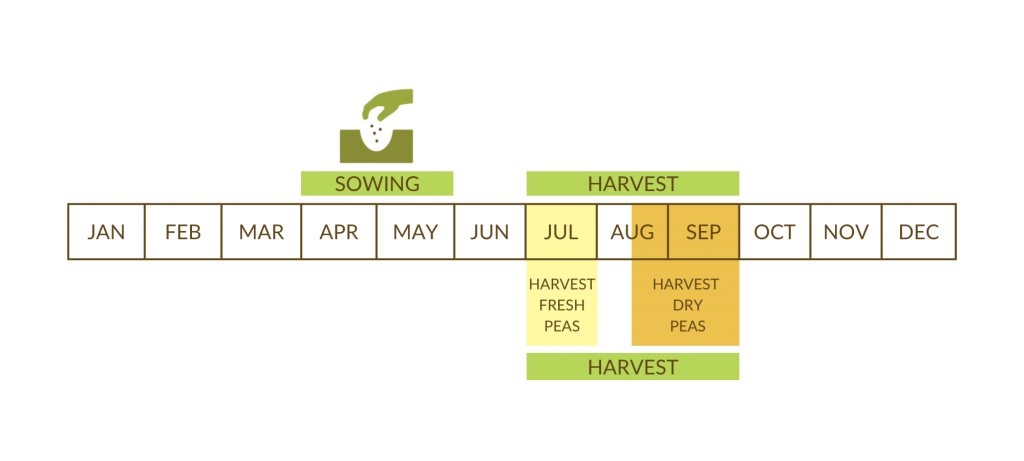
Recipes
Find recipes with chickpeas on our recipe page!
Youtube ShowGardens videos
The Global Bean Show Garden videos present the cultivation and uses of legumes in gardens and fields. Each “Show gardener” sends us a series of videos showing one or more legume species throughout their growing season. Some of our videos give an overview of specific aspects of legume cultivation. Discover here the videos about chickpeas!



